It sounded too good to be true. After reading Tenugui: A Cloth Without Limits, a friend suggested we visit an acquaintance who dyes the Japanese cloths. With my interest for tenugui at an all time high, I jumped at the opportunity. A few weeks later I found myself in my friend's car, heading up the narrow, winding roads into Kamiyama.
Impressions of Kamiyama
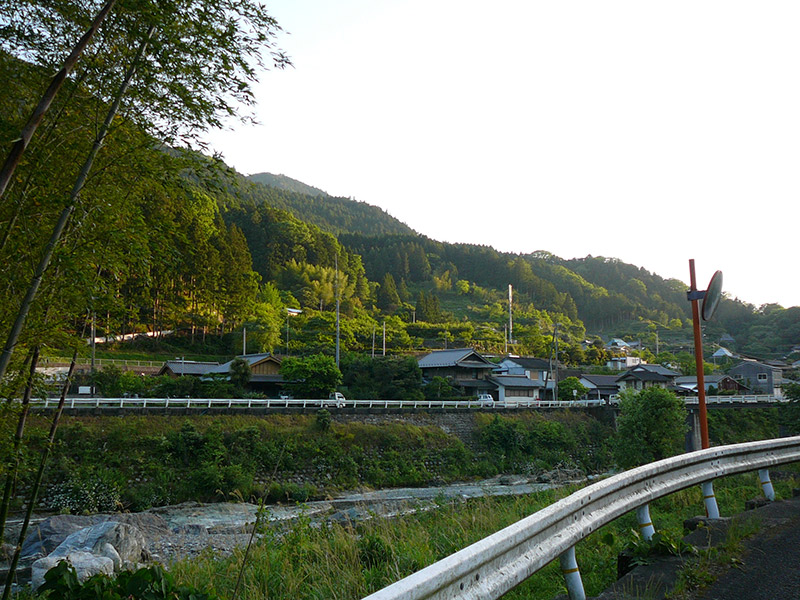
As we drove I soaked in the scenery – the turquoise Akuigawa River below us and the brilliant green mountains rising up before us. Kamiyama is a rugged but beautiful mountain town tucked away in western Tokushima Prefecture. Although an exodus to more convenient areas has Kamiyama's population thinning, a budding community of artists call the town home. Our host is one of them.
I wondered – what does a tenugui artisan look like? A vision of a wise, bearded old man, trusted dog by his side, puffing from a pipe as he used ancient techniques to create breathtaking tenugui came to mind. Perhaps the fresh country air inspired my wild imagination, but when we arrived I found the image hadn't strayed far from the truth.
The house sat tucked away between the river and mountains – off the main road but close enough to be convenient. Although he wasn't old, our host greeted us with a bearded smile and handsome dog by his side. He gave off a relaxed, natural vibe – wearing earth toned clothes, sandals and with his long hair wrapped in a towel. He was much cooler and vibrant than the old man I imagined.
"Hi! I'm Takimoto Somesho, nice to meet you."
Making Tenugui
After greeting us and introducing us to his dog, Takimoto-san invited us around back to show us his works-in-progress. There, two long sheets of white cloth hung stretched out horizontally over thin bamboo sticks. The long cloths would eventually be cut into six tenugui.
"Stretching it out," Takimoto-san explained, "makes it easy to dye." He lifted a small bucket filled with yellowish-brown liquid. "This is ume 梅 (plum) dye. With the tenugui stretched out, I apply it like this." He took a thick brush from the pale and swept it back and forth over the cloth. Flipping the cloth over, he made sure to brush both sides. "I'll repeat this process until it's the color I want."
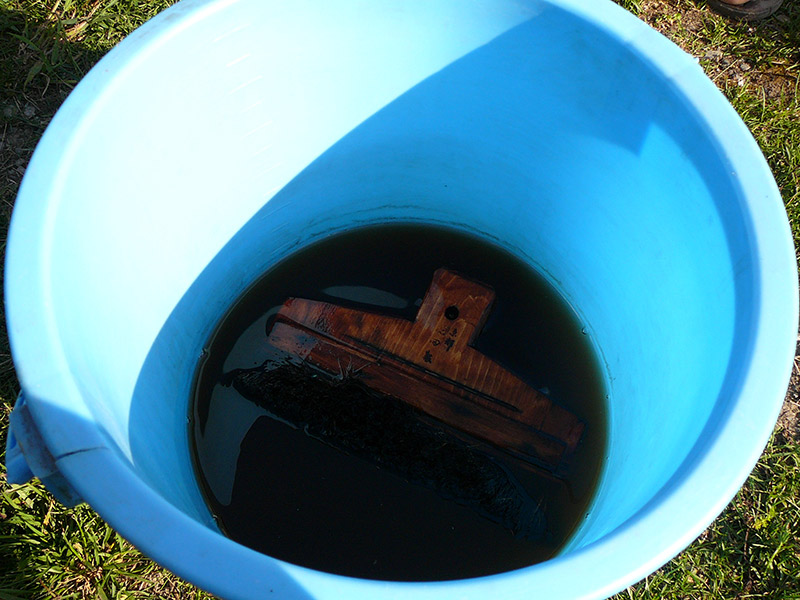
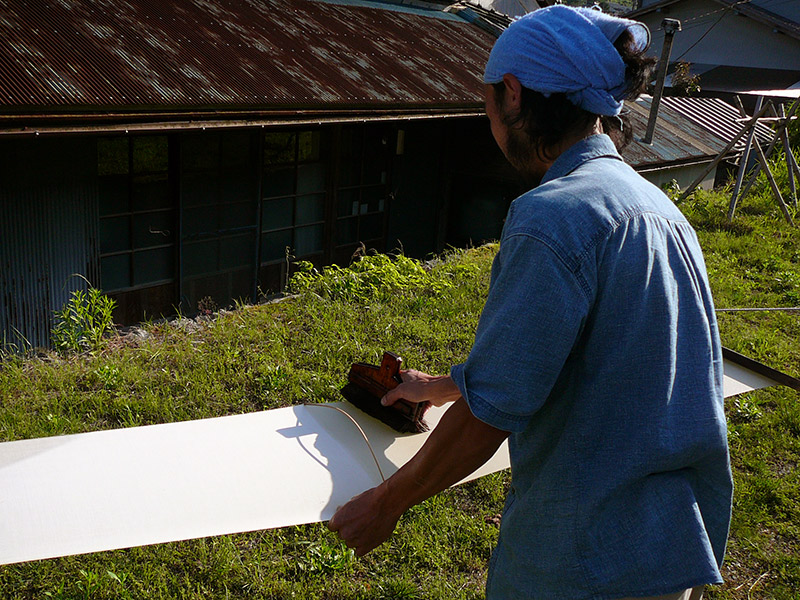

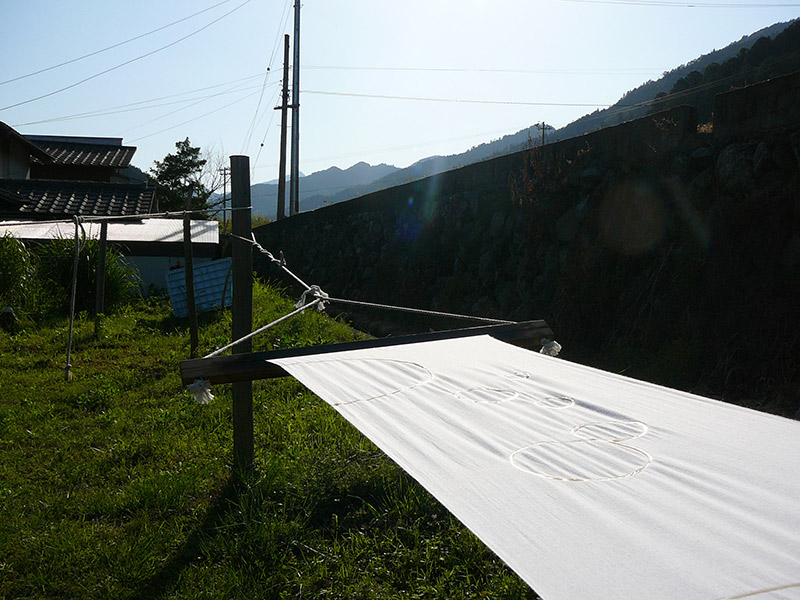

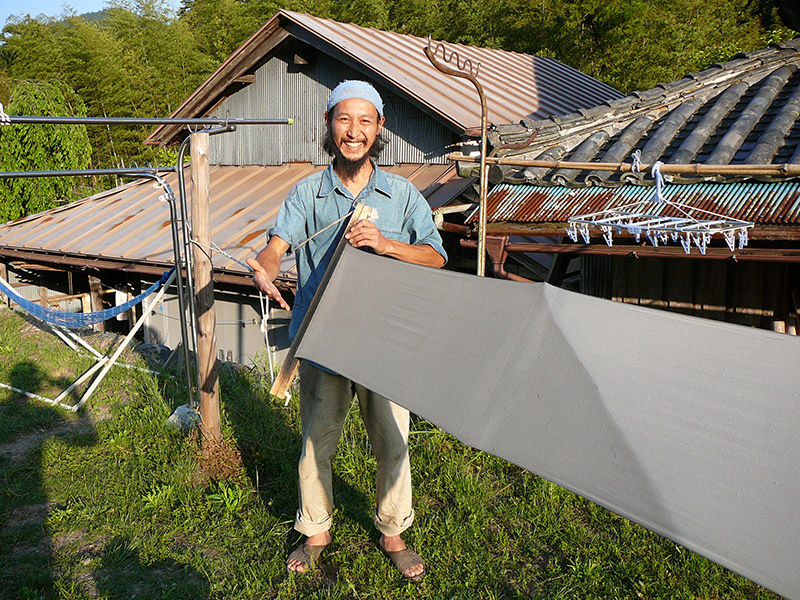
He pointed to one end of the cloth that appeared darker than the rest. "I treated this end with baisen." I scrambled for my dictionary but didn't need it. "It sets the dye," Takimoto-san explained. The English term – taken from french – is mordant.
Nearby another cloth hung, stretched out in the sun. A glue like substance had been applied to it in lines and circles. "I make this from rice," Takimoto-san explained. "I apply it to areas I don't want the dye to take."
"So it's like a stencil on a silk screen?"
"Yes. If I apply it to both sides, the dye won't color the covered areas. It's a natural printing technique. But the technique can only be used with the brush-on method. Soaking cloths in dyes involves heat that would melt the rice paste. So it's impossible to use in that situation. That's why I use the brush."
The Interview
After showing us his current projects, Mr. Takimoto graciously agreed to an interview to satisfy our tenugui curiosities.
Q: What spawned your interest in tenugui?
Tenugui and ancient, natural dyeing techniques are an important part of Japanese cultural heritage. They are particularly important to Tokushima which has a long, rich history of aizome (indigo dyeing). As time passes, these ancient techniques are being lost. Few masters still exist. I am proud of these techniques and take pride in preserving them.
Q: How did you learn dyeing techniques? Who taught you?
I apprenticed under a master in Kyoto. Kyoto is the center of Japanese kimono culture and therefore cloth dyeing techniques. Therefore it's the most ideal place to study dyeing.
Q: How long have you been dyeing?
For six years.
Q: All your dyes are homemade. How do you make your dyes?
My dyes are all natural. There are no chemicals. I make dyes from plants and trees around here (Takimoto-san held his hands in the air and looked to the forest) . For example, this dye is made from the branches of ume (plum) trees (he pointed towards the bucket and brush).
Q: How long have you lived in Kamiyama?
For four years. I had great childhood memories of playing here, so I was happy to come back.
Q: Are there any benefits to living here in Kamiyama?
Yes. It's a very natural environment. I like nature, it's quiet and relaxing here. Since I make natural things, it's very fitting.
The water here is pure and ideal for dyeing. There's no chemicals or chlorine in it, like in the city. For smaller projects I can take water from here (he points towards a concrete irrigation feed). For bigger projects I can go to the Akui River (across the street).
I collect materials like branches and leaves to make natural dyes. For example, there are many ume (plum) trees around here. Another benefit is space. I have a lot of space to work in. I have space to grow indigo for dyeing too.
Q: Are there any difficulties or challenges in your work?
Yes. I'm at the mercy of nature. Natural conditions make the dyeing process hard to control. The weather and temperature affect the colors. A lot of times I have a specific image in mind, but the outcome is different. But that's the challenge of working in nature, isn't it?
Q: I read that in ancient times certain colors were difficult to create. Purple for instance. Is that true?
Yes. Purple and red are popular Indonesian dyes. But in ancient times they were difficult colors to create in Japan. Blue was also difficult to dye. That's why Tokushima's indigo dyeing techniques were so unique and valuable. Yellow and brown are the most common. But once you get the primary colors – yellow, blue and red – you can make any color.
Q: How long does it take to finish a tenugui?
Overall it takes about three days to dye a tenugui. As you saw today, I can work on several at a time. The two sheets of cloth will make six tenugui.
Q: Where do you draw inspiration from?
(Again he holds is arms up and smiles) Nature! And music, I play the drums. I play in a group called "Kamiyaman Band." We will perform at the upcoming Earth Day festival.
Q: How do you make images on your tenugui?
I draw them by hand and sometimes touch them up on the computer. But all of my prints are by hand.
Q: I have read that there's a tenugui resurgence – that they are gaining popularity again. Have you seen any evidence of this?
Yes. Especially among young people. Young people are interested in old fashioned designs. It's a tenugui revival! There are also collectors. There's one man that buys from me often – he's crazy about tenugui!
There's even a fundoshi (traditional Japanese underwear) revival. It's very cool in the summer and can be used as a bathing suit. There's even a fundoshi dance/research team. You should come see them on Earth Day!
Q: Who are your main customers?
I sell my products at exhibitions, to friends, and take special orders. Most of my sales are local – in Tokushima. I don't have an internet shop.
Q: What makes tenugui special?
Tenugui dry very quickly. That's their most useful trait. But they are also great for wrapping things and can be used in various fashions as headware. It's the all-mighty cloth!
Q: What is your dream?
I want to preserve and master ancient natural dyeing techniques. To master dyeing I must master nature. By research and practice I'll learn the best techniques and the best plants to use for the dyes.
I also want to create some techniques of my own. I am doing some research right now and hope to create new dyeing techniques. But that's a secret.
BONUS! Mr. Takimoto addressed a few questions Tofugu readers posted after reading Tenugui: A Cloth Without Limits.
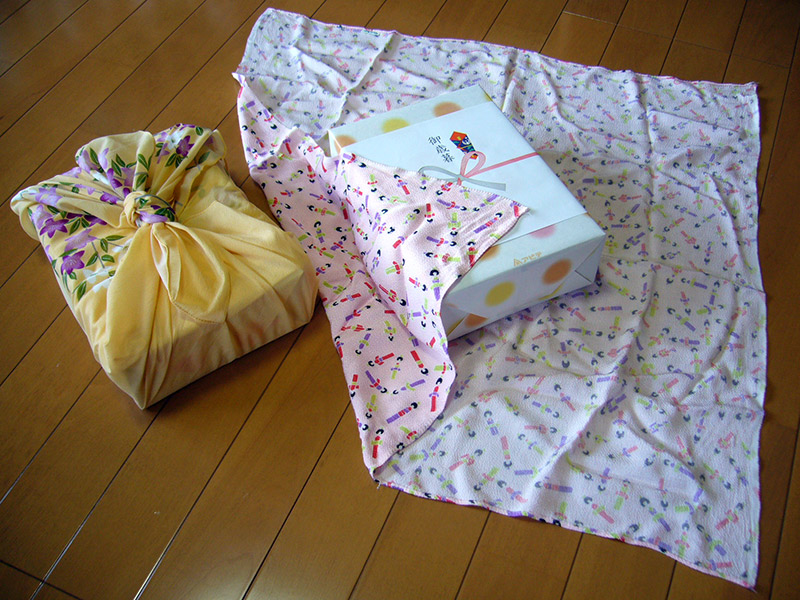
Q: What's the difference between tenugui and furoshiki?
Furoshiki are square, tenugui are rectangle. Because of their square shape, furoshiki are better for wrapping things or used as table cloths. In fact, I even heard furoshiki used to be used as bath mats at onsen baths. That's where the (furo 風呂 (bath) and shiki 敷 – floor) come from. But tenugui dry fast and make better towels.
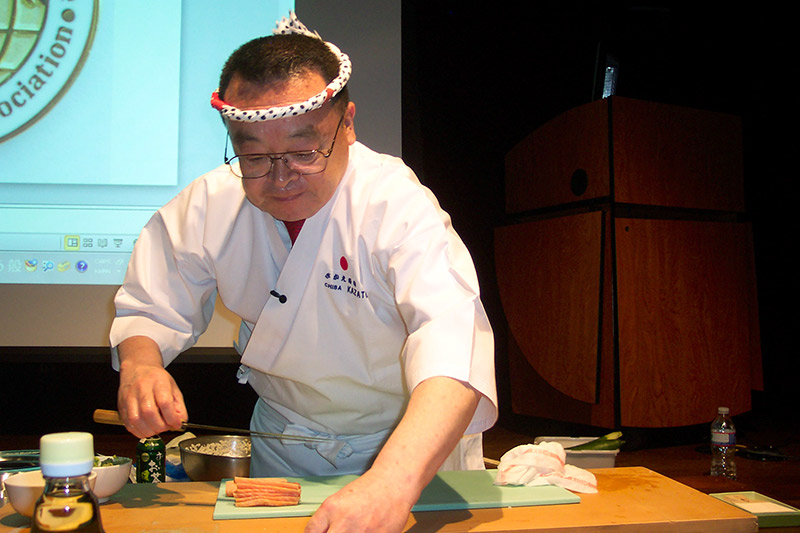
Q: Do cooks in Japan use tenugui as headware?
Some do. Sushiyasan (a product + 屋 (shop) + the honorific さん (Mr./Ms.) = the worker in said shop, in this case a sushi chef), udonya, sobaya, craftsmen and farmers often wear tenugui. Particularly craftsmen and farmers because tenugui can be worn in various ways, so it's very convenient.
The Fruits of Takimoto-san's Labor
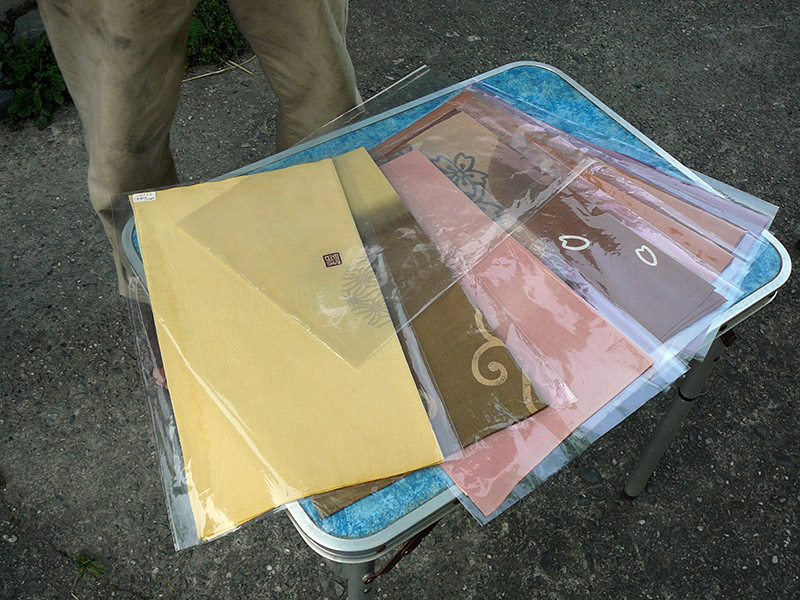
tenugui-completed Some finished products.
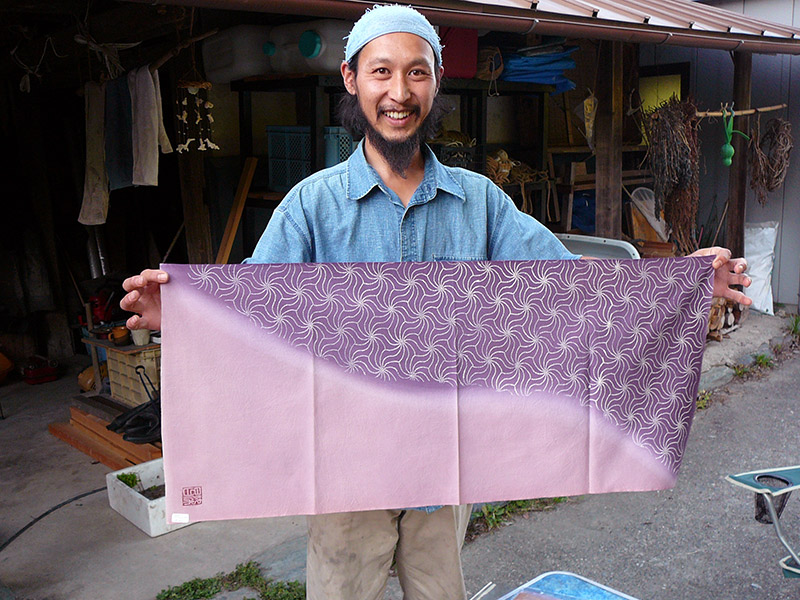
I'll take that one!
We thanked Takimoto-san for inviting us to his home and workplace and taking the time to teach us about tenugui. "No problem. I'm happy to spread tenugui culture!" he replied as he waved good-bye.
As we drove home with a bounty of new tenugui by our sides, we discussed what we had learned. Takimoto-san impressed us all. His gorgeous handmade products represent a melding of artistry and craftsmanship achieved through years of hard work and discovery. If he has yet to master the art, his passion will surely earn him the title. Takimoto-san's tenugui are truly "all-mighty cloths" – local products born from Japan's cultural heritage. And it's thanks to passionate people like Takimoto-san that Japan's cultural heritage remains preserved for both current and future generations to admire and enjoy.
Special thanks to Takimoto Somesho for the tour and interview. And special thanks to my friends Emma and Hide for setting up the interview.
